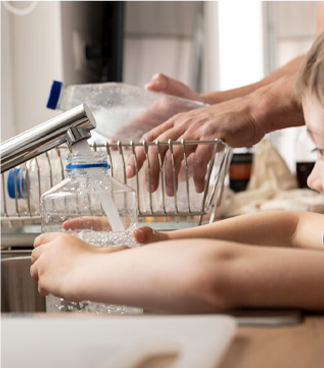Dec . 04, 2024 10:20 Back to list
Guidelines for Installing a Submersible Water Well Pump Efficiently and Safely
How to Install a Submersible Well Pump A Comprehensive Guide
Installing a submersible well pump can seem like a daunting task if you’re not familiar with the process. However, with the right tools, equipment, and a step-by-step approach, you can successfully install one yourself. This guide will walk you through the essential steps to install a submersible well pump, ensuring you have a reliable water supply for your home or garden.
Introduction to Submersible Well Pumps
A submersible well pump is designed to be submerged in water. It operates by pushing water to the surface through a pipe. These pumps are commonly used in residential wells, irrigation systems, and various industrial applications. They are efficient and can deliver a high volume of water, making them a popular choice for many.
Tools and Materials Needed
Before you begin the installation, gather the following tools and materials - Submersible well pump - Well casing pipe - Electrical wiring - PVC or poly pipe (for water delivery) - Water level gauge - Pipe fittings and connectors - A power source (breaker box) - A wellhead seal - Wrenches and pliers - Safety gear (gloves, goggles) - A well casing adapter (if necessary)
Step-by-Step Installation Process
1. Gather Information
Before you start, gather information about your well. You need to know its depth, water level, and the diameter of the well casing. This information will help you choose the appropriate pump size and type.
2. Prepare the Well
Make sure the well is accessible and clear of any debris. Ensure you have a safe working area. Use a wellhead seal to prevent contamination from surface water.
3. Assemble the Pump and Pipe
Attach the necessary fittings to the submersible pump according to the manufacturer’s instructions. Connect the discharge pipe, ensuring it’s secured tightly. Use Teflon tape on threaded connections to prevent leaks.
4. Install Electrical Wiring
Electrical work can be dangerous. If you’re not experienced, it might be best to hire a licensed electrician. If you choose to proceed, ensure the power is turned off at the breaker box. Run the electrical wiring from the pump to the power source, adhering to local electrical codes. Use weatherproof connectors and enclosures.
how to install a submersible well pump

5. Lower the Pump into the Well
Carefully lower the pump into the well casing using a rope or cable. Take your time to ensure that it descends straight. Most pumps come with a guide or support system to keep them aligned. Ensure that the pump is below the water level, usually at least 10 to 15 feet underwater.
6. Connect the Pump to the Discharge Pipe
Once the pump is submerged, connect it firmly to the discharge pipe. Ensure all connections are secure to prevent leaks. If your well requires a check valve, install it according to the manufacturer’s recommendations.
7. Fill the Well with Water (If Needed)
Depending on the type of pump you are installing, it may be necessary to fill the well with water to create pressure and prevent the pump from running dry.
8. Test the System
Before you finalize everything, perform a test of the pump. Turn on the power at the breaker, and check for proper operation. Monitor the output flow, listen for unusual noises, and check for leaks in the plumbing connections.
9. Secure Everything
If the pump operates correctly, secure all connections and ensure any exposed wiring is protected. Install the wellhead seal to keep contaminants out and ensure the area is safe.
10. Regular Maintenance
Finally, schedule regular maintenance for your well pump. This includes checking the electrical connections, inspecting the pipe fittings, and monitoring the water quality. Regular maintenance will help ensure a long life for your pump.
Conclusion
Installing a submersible well pump can be straightforward if you follow the correct procedures and take all necessary precautions. Always prioritize safety and, when in doubt, consult with or hire professionals. With a bit of time and effort, you can enjoy a reliable source of water for years to come!
-
Submersible Water Pump: The Efficient 'Power Pioneer' of the Underwater World
NewsJul.01,2025
-
Submersible Pond Pump: The Hidden Guardian of Water Landscape Ecology
NewsJul.01,2025
-
Stainless Well Pump: A Reliable and Durable Pumping Main Force
NewsJul.01,2025
-
Stainless Steel Submersible Pump: An Efficient and Versatile Tool for Underwater Operations
NewsJul.01,2025
-
Deep Well Submersible Pump: An Efficient 'Sucker' of Groundwater Sources
NewsJul.01,2025
-
Deep Water Well Pump: An Efficient 'Sucker' of Groundwater Sources
NewsJul.01,2025
-
 Submersible Water Pump: The Efficient 'Power Pioneer' of the Underwater WorldIn the field of hydraulic equipment, the Submersible Water Pump has become the core equipment for underwater operations and water resource transportation due to its unique design and excellent performance.Detail
Submersible Water Pump: The Efficient 'Power Pioneer' of the Underwater WorldIn the field of hydraulic equipment, the Submersible Water Pump has become the core equipment for underwater operations and water resource transportation due to its unique design and excellent performance.Detail -
 Submersible Pond Pump: The Hidden Guardian of Water Landscape EcologyIn courtyard landscapes, ecological ponds, and even small-scale water conservancy projects, there is a silent yet indispensable equipment - the Submersible Pond Pump.Detail
Submersible Pond Pump: The Hidden Guardian of Water Landscape EcologyIn courtyard landscapes, ecological ponds, and even small-scale water conservancy projects, there is a silent yet indispensable equipment - the Submersible Pond Pump.Detail -
 Stainless Well Pump: A Reliable and Durable Pumping Main ForceIn the field of water resource transportation, Stainless Well Pump has become the core equipment for various pumping scenarios with its excellent performance and reliable quality.Detail
Stainless Well Pump: A Reliable and Durable Pumping Main ForceIn the field of water resource transportation, Stainless Well Pump has become the core equipment for various pumping scenarios with its excellent performance and reliable quality.Detail
